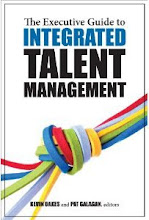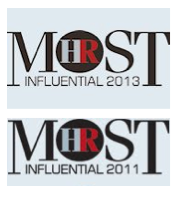 Gary Hamel’s main proposition has much broader impact than just creating innovative organisations. He argues that management itself is out of date and acts as a drag on organisations’ success.
Gary Hamel’s main proposition has much broader impact than just creating innovative organisations. He argues that management itself is out of date and acts as a drag on organisations’ success.
Hamel’s criticism of management links very closely with my own assessment of HRM. And just as I say that HRM has produced huge benefits for organisations, so Hamel is careful to stress that management has not been a failure. Indeed, he notes that it has succeeded in co-ordinating the efforts of tens of thousands of employees. It is just that given today’s frantically accelerating rate of change we need to do much better to inspire people to bring all of their capabilities to work every day:
“The diligent application of those industrial age principles has been a boon to economic prosperity. Yet if the goal is to create organisations that are highly adaptable and fully human, these principles are insufficient and often toxic… The machinery of modern management gets fractious, opinionated and free-spirited human beings to conform to standards and rules, but in so doing it squanders prodigious qualities of human imagination and initiative. It brings disciple to operations, but imperils organisational adaptability.”
Referring to Charles Handy’s sigmoid curve, Hamel explains:
“Our industrial-age management model is languishing out at the far end of the S-curve, and may be reaching the limits of its improvability. Could the practices of management change as radically over the first two or three decades of this century as it did during the early years of the 20th century? I believe so. More that that, I believe we must make it so… To jump onto a new management S-curve, we’re going to need some new management principles.”
Hamel expresses his vision of the future of management as a dream:
“I dream of organisations that are capable of spontaneous renewal, where the drama of change is unaccompanied by the wrenching trauma of a turnaround. I dream of businesses where an electric current of innovation pulses through every activity, where the renegades always trump the reactionaries. I dream of companies that actually deserve the passion and creativity of the folks who work there, and naturally elicit the very best that people have to give.”
Supporting Gurnek Bains thinking on meaning, Hamel explains that companies are unlikely to get this high level of contribution from their employees unless they feel they are working toward goals which encompass bighearted ideals: “the moral imperatives that have aroused human beings to extraordinary accomplishment down through the ages: beauty, truth, love, service, wisdom, justice, freedom and compassion.”
Sorry to go on, because I’ve mentioned this a few times already, but HR functions that aim simply to ‘talk the language of business’ are going to find it tough to raise these themes. HR 2.0 needs to talk the language of people, and encourage business 2.0 to do the same.
Note: you can also see Gary Hamel’s blog and listen to his first podcast at http://discussionleader.hbsp.com/hamel/.





























0 comments:
Post a Comment
Please add your comment here (email me your comments if you have trouble and I will put them up for you)